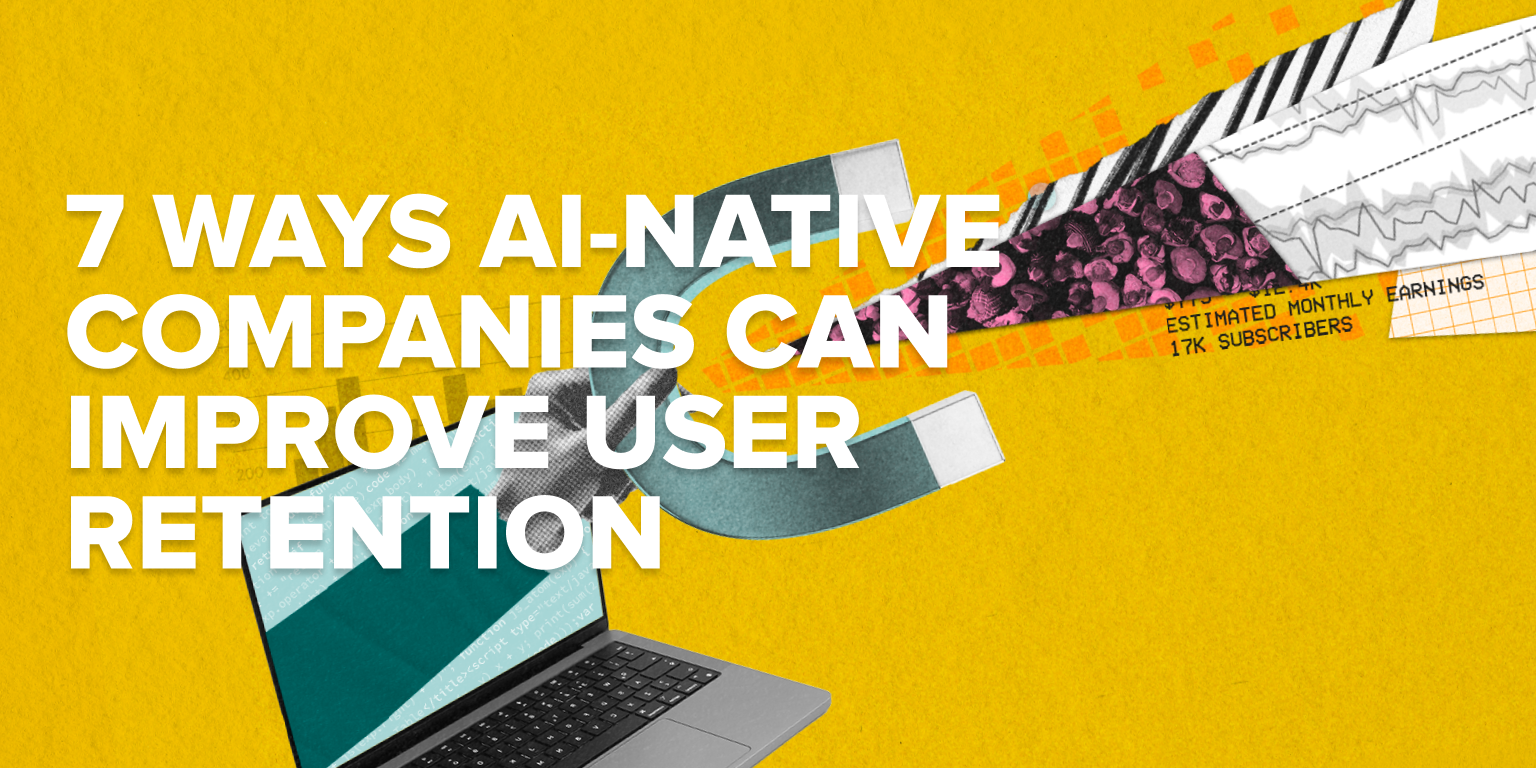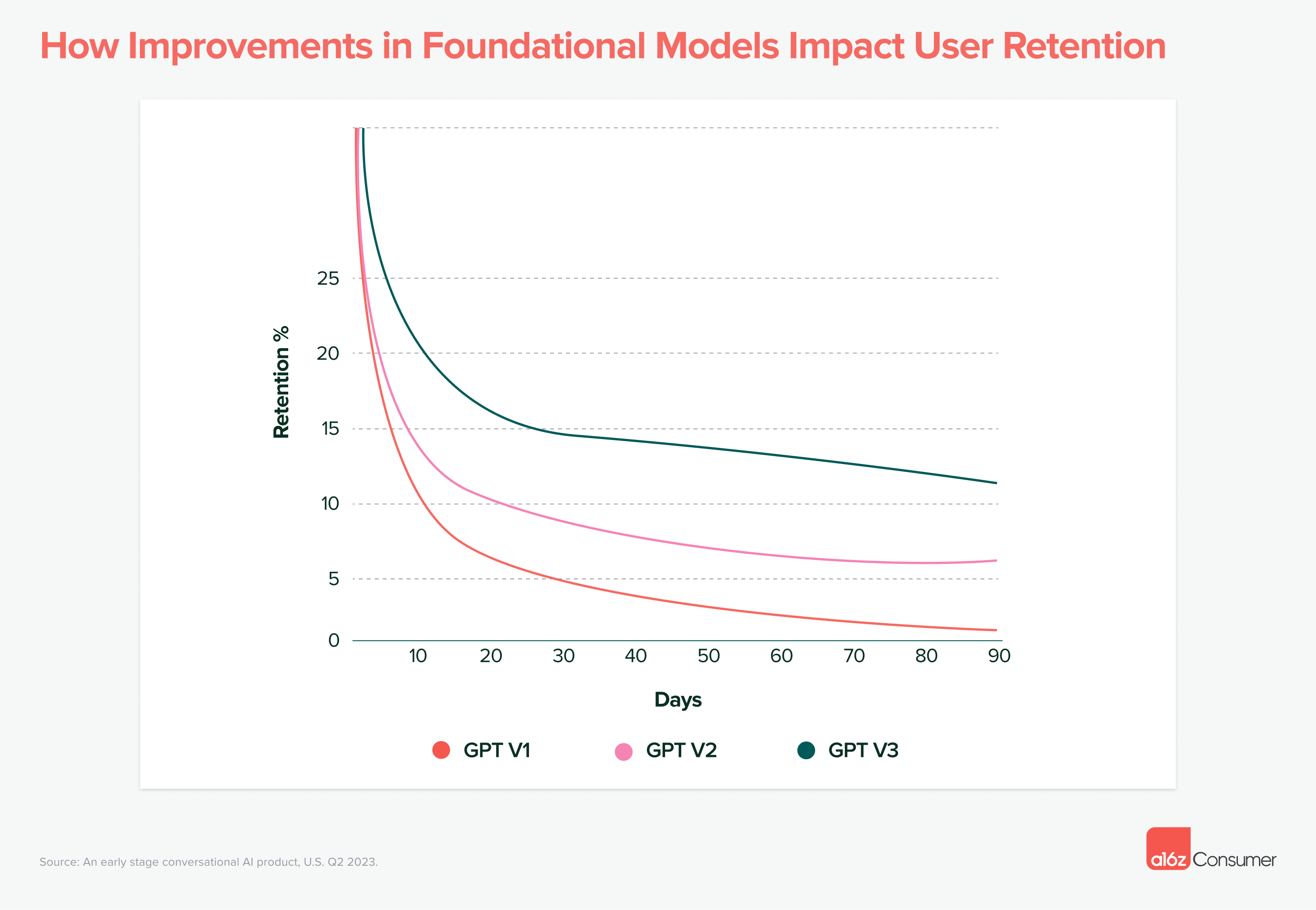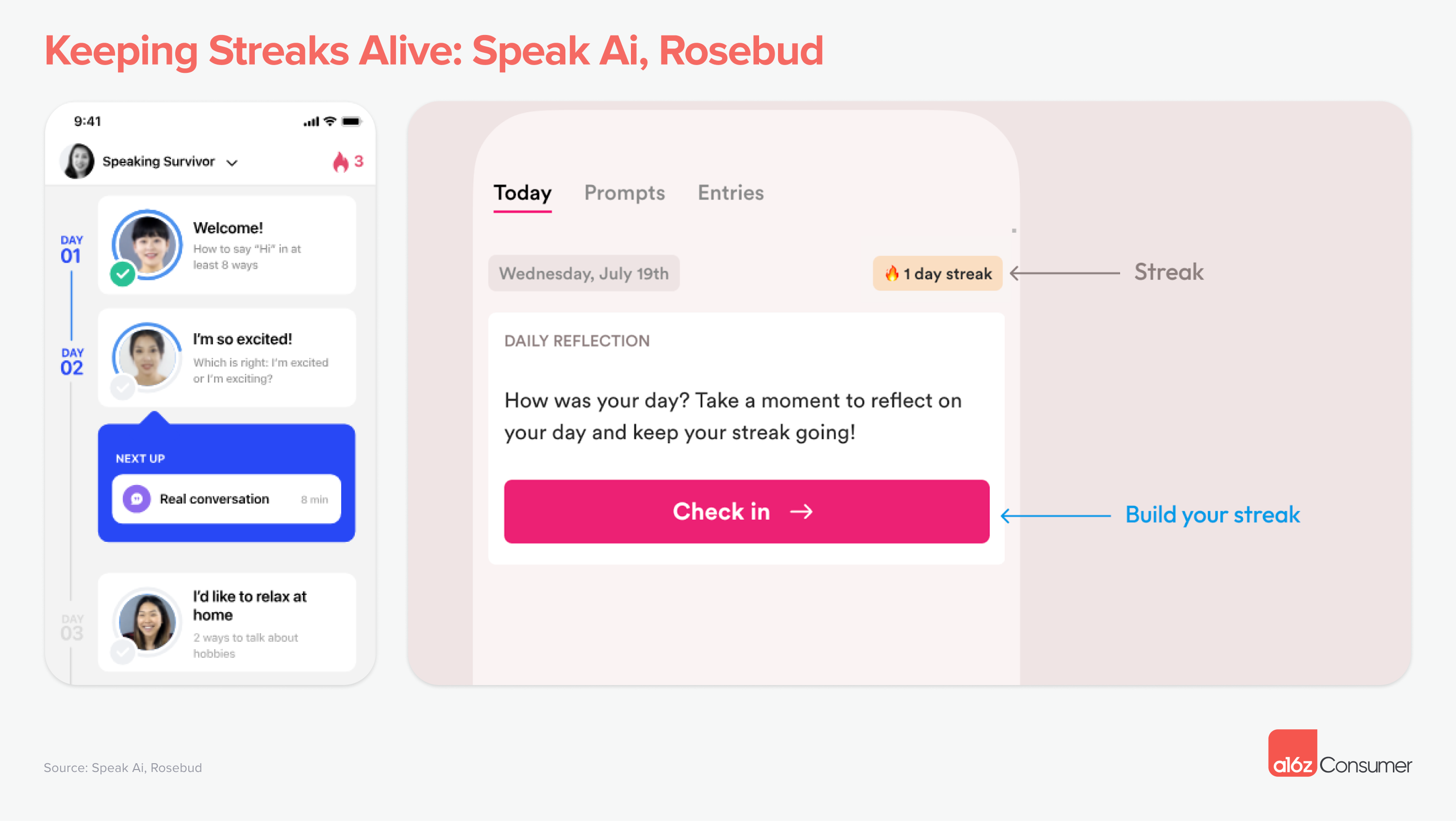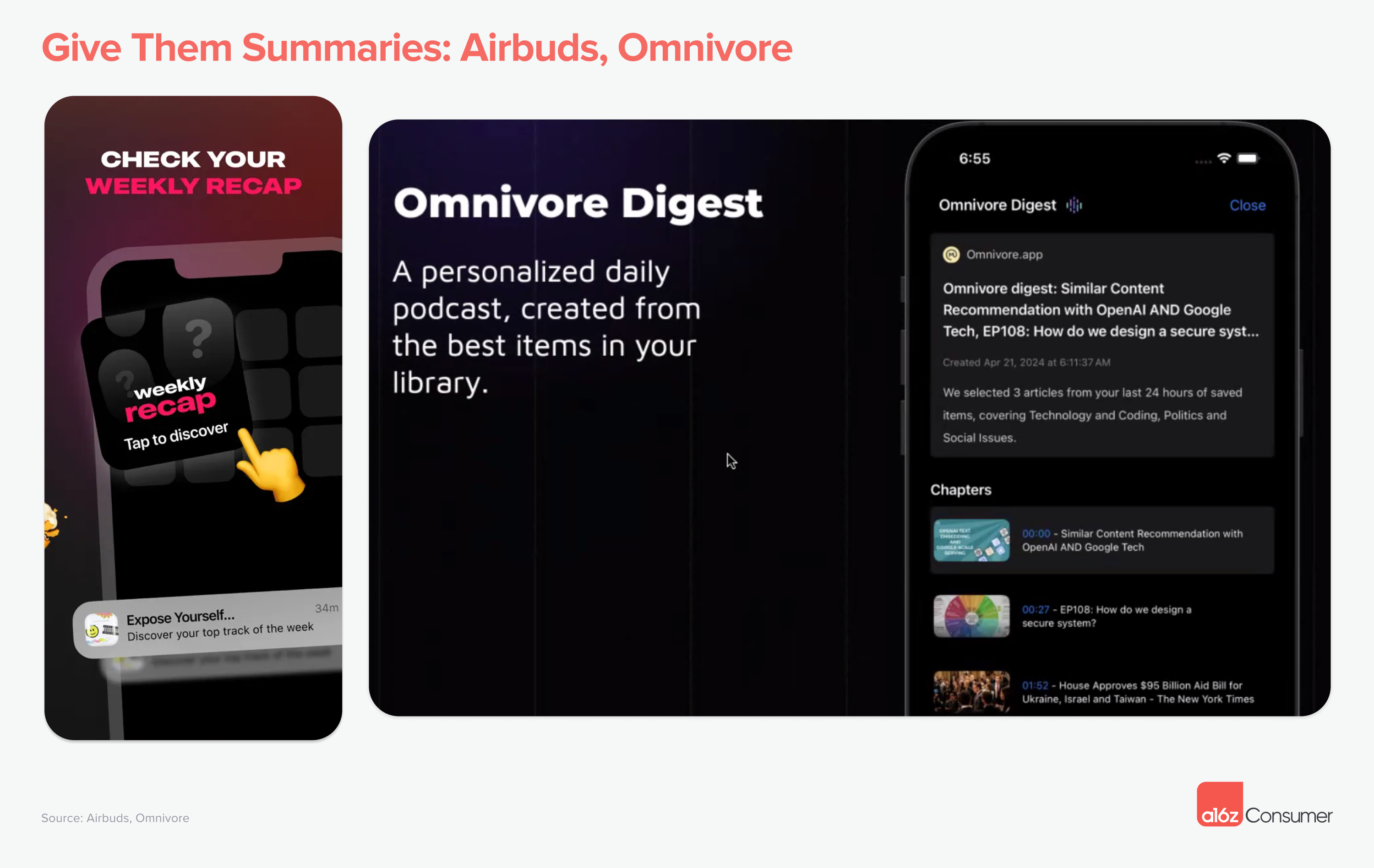For consumer products, the rubber hits the road at user retention. It’s the lifeblood of an app and the hardest metric to move, as I learned viscerally during my time running the growth team at Snap. To attract repeat users, companies can’t just fill a product with the latest and greatest tech — they must intentionally craft each product feature to ensure their users come back again and again and again.
What Is User Retention?
User retention is a measure of the number of consumers who consistently interact with a product. It’s a key metric in tracking growth and success. Great retention is a natural result of delivering the core product value to users, which of course varies by product.
But recently, a few savvy consumer founders have found ways to improve user retention by applying specific methods — in some cases, increasing their N-Day D30 retention by a whopping 10-15% (which our benchmarking study identifies as going from “okay” to “great”).
So what does this mean for the huge wave of new consumer AI companies, whose products are still early in their product cycles, often early in their implementation stages, and are evolving in real time? Can these “retention boosters” apply to them?
In a word: yes. Despite the early stages and the “tourist phenomenon,” AI-native consumer products should consider retention one of their core metrics, and the following user retention strategies can help founders build towards great retention in the same ways as non-AI companies.
Here are the 7 most effective ways for AI-native consumer companies to improve their user retention.
1. Obsess Over Delivering the Core Product Value. Fast.
Minimizing the time it takes users to experience the magic of your product, whether that’s through minimizing latency or frictionless design, could significantly improve your user retention.
Google famously focused on the speed of search in its early days. This led to the simplicity of Google’s UI — bringing users to the familiar screen with nothing other than a search bar, making it crystal clear what the product is meant to do. Google also incorporated site loading speed as a ranking factor, understanding that speed matters to their users.
AI products can, and are, adopting the same obsession with delivering their core product value as quickly as possible. And for AI-native products, this includes ensuring the quality of the product’s underlying foundation models, so users get a speedier and more relevant experience.
Perplexity — an AI-native answer engine — utilizes a bare-bones UI similar to Google that makes it clear that users are meant to ask a question. It also incorporates state-of-the-art LLM releases at a lightning speed (usually on the day they get announced, if not earlier). This allows users to benefit from the increased responsiveness of the product, and in turn, retain at a higher rate.
Below is an example of retention trends from an AI-native conversational consumer product, where we see that retention improves along with the underlying model quality.
2. Feature-Gated Onboarding
For many products, users need to hit a specific “aha moment” for long-term retention. For a social app, this may be having 5 friends on the platform, for a work collaboration product, it may be joining a few channels. Products can force users to experience that aha moment early during the onboarding — significantly increasing the chance they will retain.
Lapse — a disposable camera app — is a good example of a product that “gates” the usage of the product behind a robust onboarding flow. Once the app is downloaded, users go through a tutorial and are asked to invite at least 5 of their friends before being able to use the product. This ensures that the new users have at least 5 friends on the app, which is often an important metric for social products to have longevity.
We are already seeing examples of AI-native products adopting this strategy. Viggle allows users to create consistent and engaging character videos within just a few minutes. In order to create, a new user must join its Discord server and go through a flow of reading the rules, learning the commands, and creating a video once before being able to fully use the product. This ensures that new users are forced to learn the nuances of the product before getting to the aha moment — the joy of being able to create an engaging video with a consistent character.
3. Designing Reciprocity
When you first open the BeReal app, before you sign up, content is limited and the pictures you can see are blurred out. They show what you are missing, and invite you to contribute to the product. It’s only after new users create their daily BeReals that the product “unlocks” friends’ content, so you can see and interact with their pictures. This “give to get” design builds retention by increasing the creation activity on the product, which in turn increases the content density as well.
And we haven’t seen many successful AI-native products adopt this mechanism yet! If the product can benefit from increased creation and its core value aligns well with the principle of reciprocity, designing this mechanism into your product can improve the retention meaningfully.
4. Building Smart Notifications
Notifications are another way to increase the stickiness of your product — but use them wisely. When building notifications, it’s important to consider the message being delivered, the perceived sender, and their frequency.
When the “perceived sender” of a notification is the product (e.g., an app wishing you a Happy Earth Day), some may see it as annoying because it’s promotional and is coming directly from the company itself. On the other hand, if the perceived sender is a user’s friend with new content, it can feel like a positive thing. For example, if Partiful users receive an SMS text blast related to an event they RSVP-ed to, the notification is welcomed and isn’t perceived as coming from the company.
As AI-native product Perplexity starts to understand the interest graph of its users, it can “push notify” them when there is breaking news within their interest category. Because of this valuable timely information, Perplexity’s notifications can bring users back to the app again and again.
That said, as we all know, notifications can become a double-edged sword. Receive too many, and you’ll turn off all notifications, likely for good.
5. Keeping Streaks Alive
Gamifying products with streaks — a feature that keeps track of consecutive usage and gives a way for people to share their progress — has up-leveled retention for many apps over the last decade.
One well-covered example of this is Snapchat’s aptly named “Streaks.” The 2017 phenomenon captured the competitive spirit of teenagers, encouraging them to send snaps back and forth with their friends for at least 3 days straight to earn a flame emoji. Streaks became a symbol of friendship, an expensive digital badge (as it takes real time and consistency to get!), and a key retention driver.
And AI-native products are starting to utilize this in a thoughtful manner — especially for products whose core product value resides in habituation. For both Speak Ai, an AI language tutor, and Rosebud, an AI journaling product, habituation is an important part of their value proposition. As a result, these products have built-in streak functionalities that reward users for coming back.
Be aware that there can be a downside to streaks. If a user breaks a streak, they might hesitate to start a new one. Sometimes building in microtransactions to keep a streak alive, even if you miss a few days, can be a valuable way to keep users going!
6. Give Them Summaries
Closely tied to streaks are user activity summaries, a well-designed rundown of how a person interacts with a product — think Spotify’s popular year-end Spotify Wrapped or Airbuds’ Weekly Recap. This retention strategy puts a bow around individual behaviors that feel unique to that user.
What’s particularly interesting about summaries? With generative AI, it’s easier than ever for companies to take user content and intelligently generate these custom recaps for their users.
Omnivore — an open-source, read-it-later app — recently demoed how AI can really provide creative summarization that benefits users. Utilizing text-to-speech technology and LLM-powered summarization, Omnivore can create a daily podcast from saved items in users’ libraries. This not only allows users to get snippets from their saved articles, but also lets them consume content in whatever modality they are in the mood for.
7. Status for the Power Users
Products that want to build strong communities have the power to reward creative, influential users with status, which can be very appealing (hat tip to Eugene Wei’s “Status as a Service” post, where he proclaims that people are “status-seeking monkeys!”). Giving your most dedicated users statuses encourages them to return to the product, and it also gives new and returning users goals to shoot for within the product.
In more established communities like Reddit, these statuses can take the form of users becoming moderators. Reddit mods help set the tone of individual subreddits’ discussion — they can delete unhelpful threads or weigh in to steer conversations. Statuses can also take the form of leaderboards, sparking competition to keep people returning to the app (e.g., Strava designating runners as “Local Legends”).
AI-native products are following suit. Civitai has a variety of leaderboards for model creators, with users competing for the most likes in a certain category, over a 30-day period. Users can compete in categories ranging from “Poses” to “Comedians” to “Critics.”
Sticking the Landing
How best to prioritize user retention is a question every company will have to answer for itself based on its business model, target audience, and industry. And not every user may be worth retaining! For example, pushing to retain all “tourists” may ultimately water down the community and product experience, turning off higher-value users.
While it’s still very early days for consumer AI products, when it comes to creating effective retention strategies at scale, they can draw multiple lessons from their consumer predecessors. And the aforementioned strategies are only the beginning. As every company and the space they’re building in is unique, so are the ways they can show their value to users and engender ongoing trust and engagement.
If you’ve discovered a new AI-native retention boost, or feel like I’m missing something in this post, I’d love to hear from you! You can find me on X at @kirbyman01, or email me at bryan@a16z.com.








